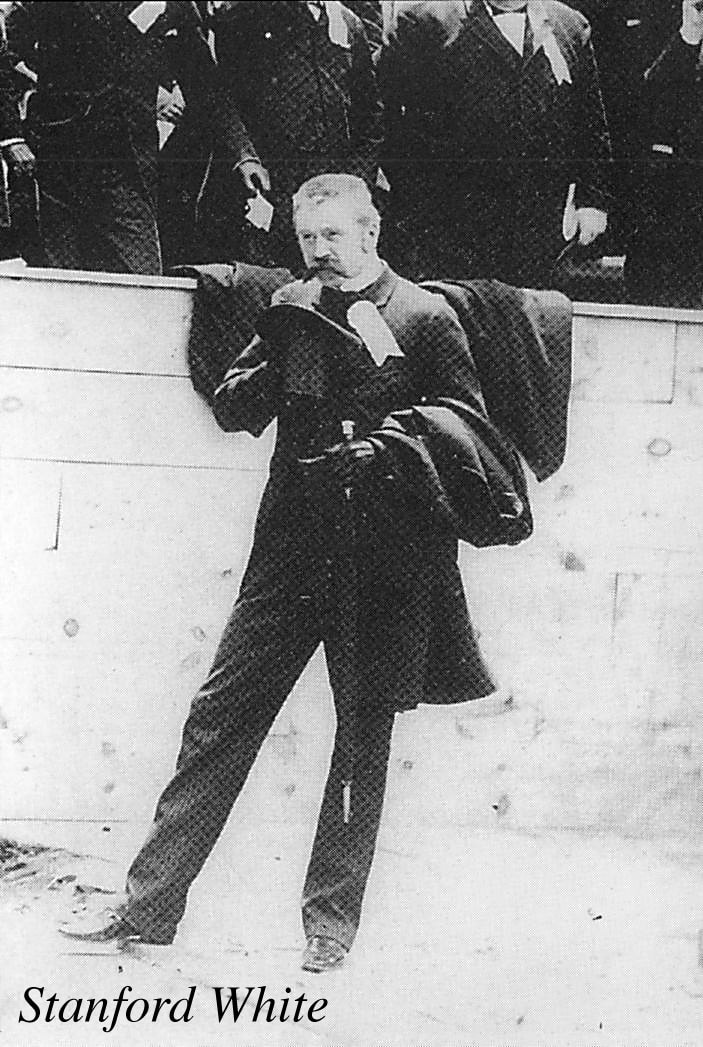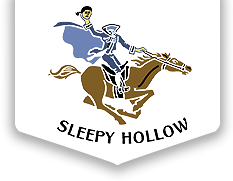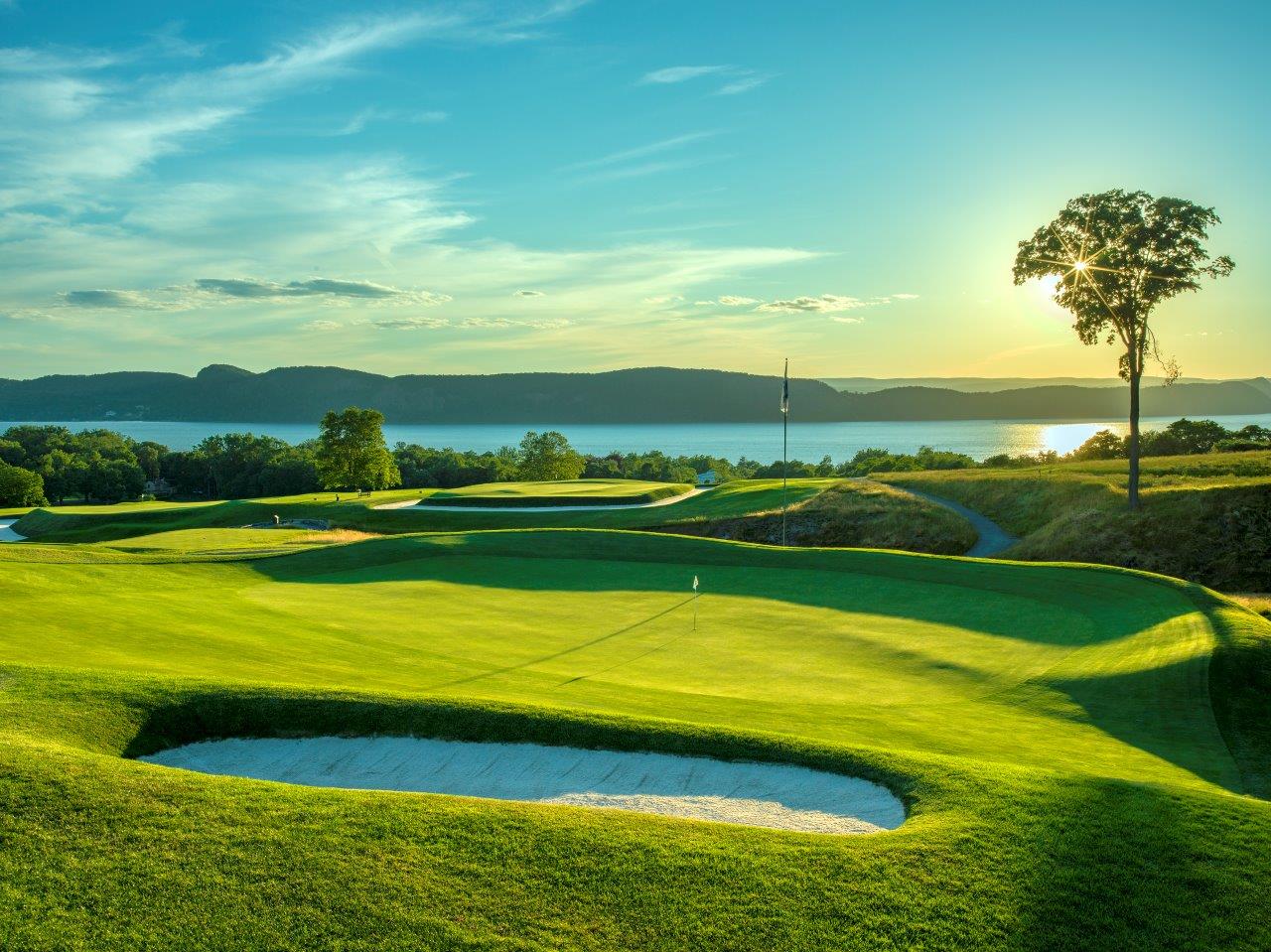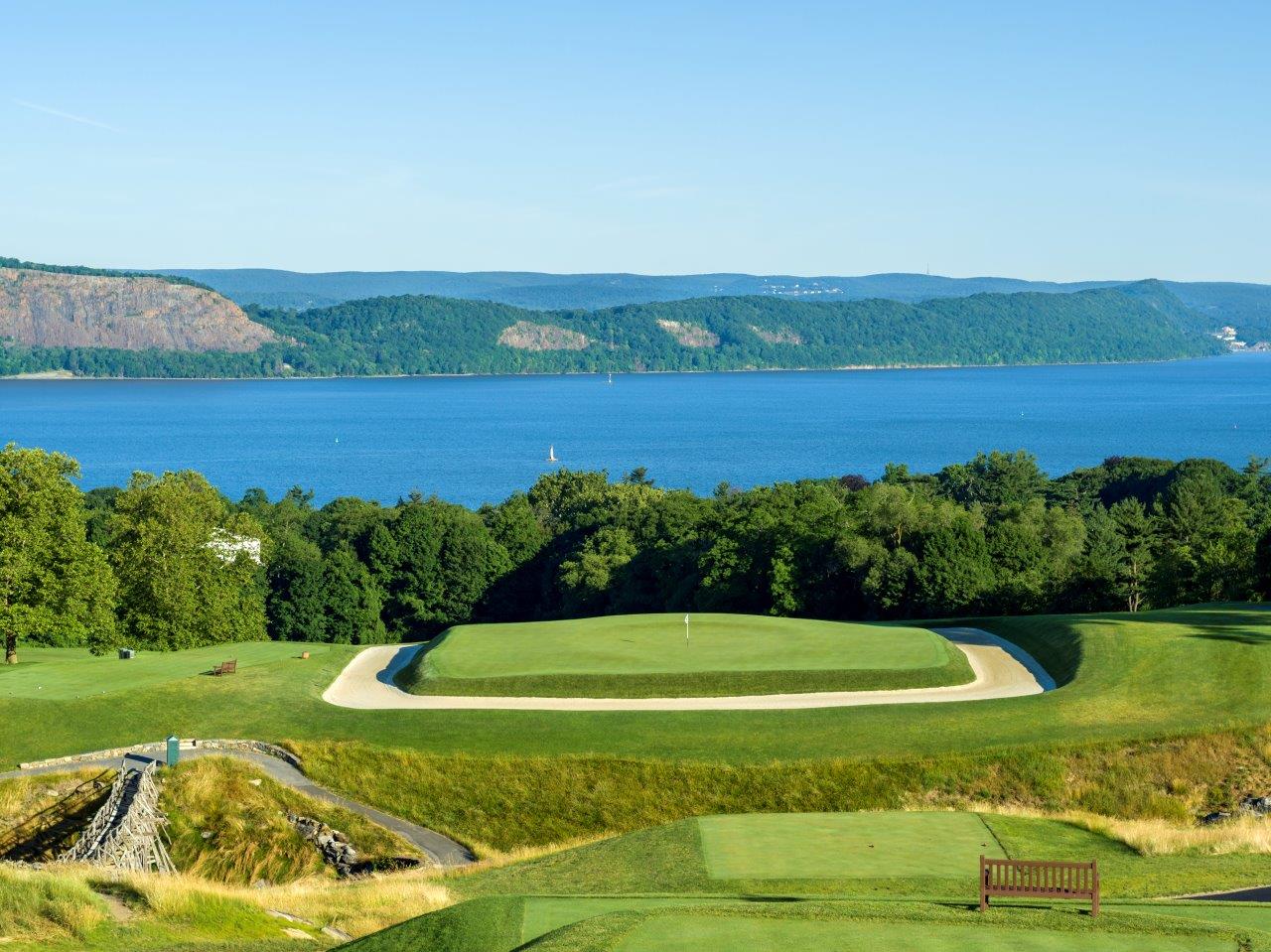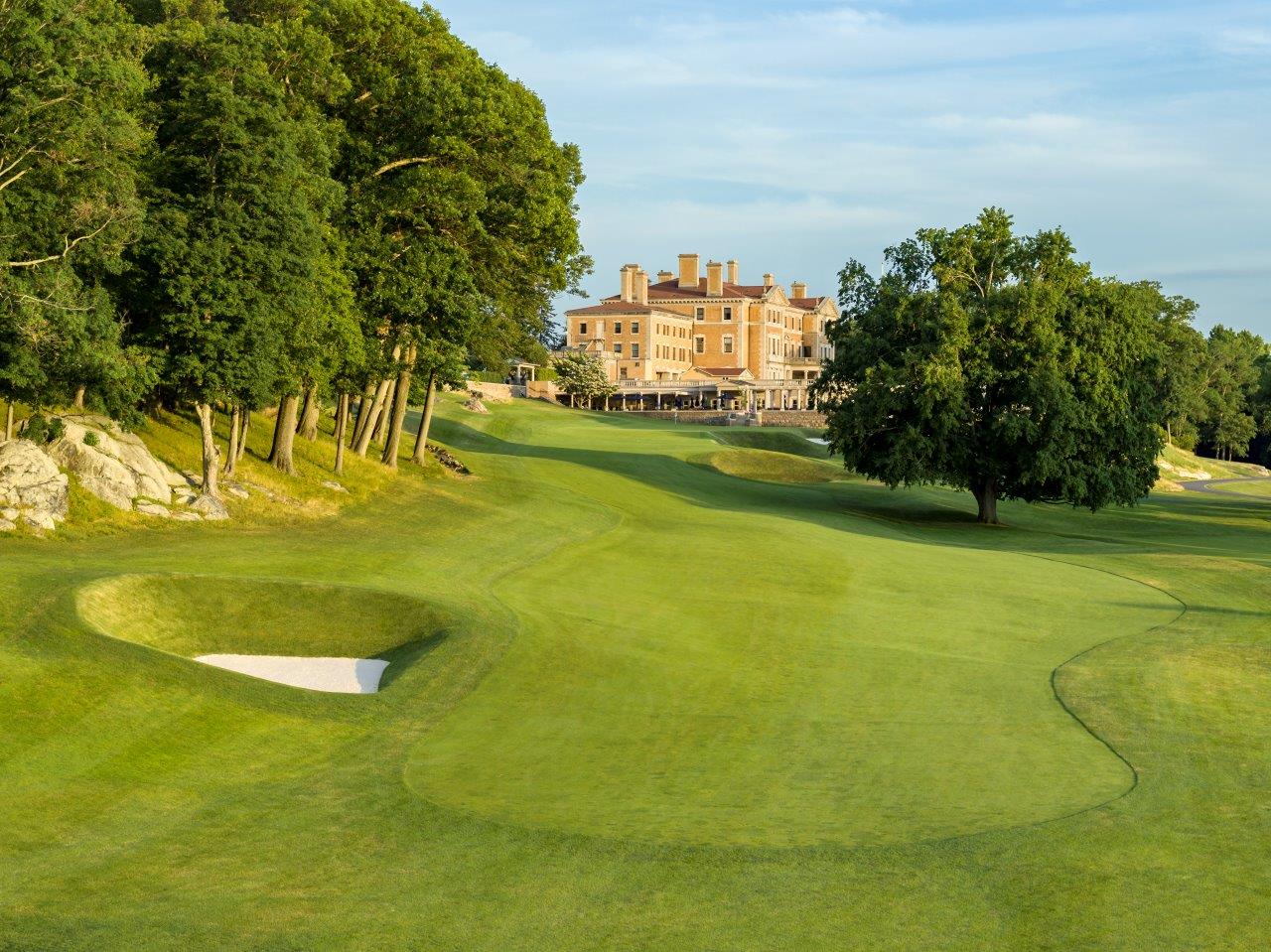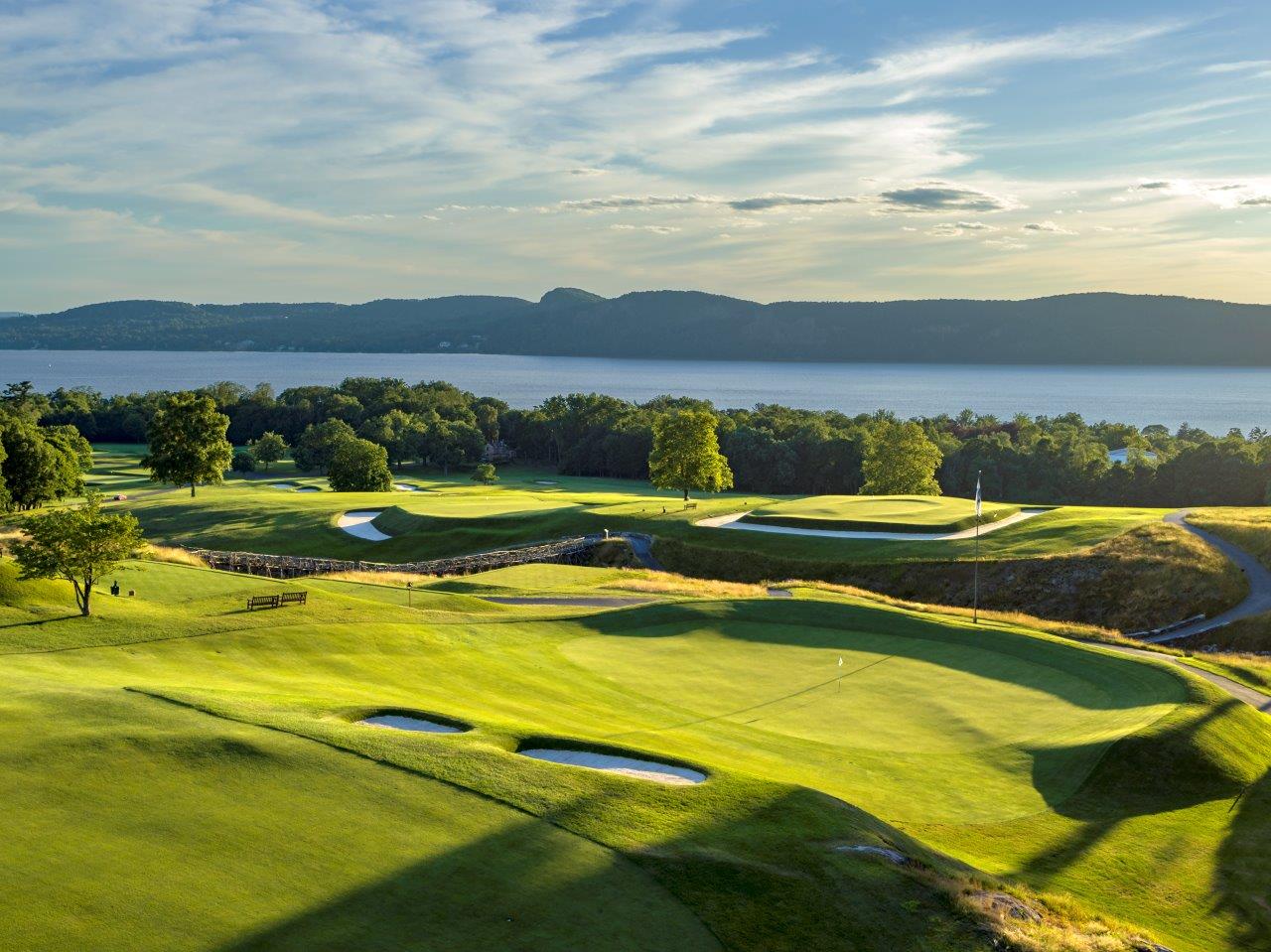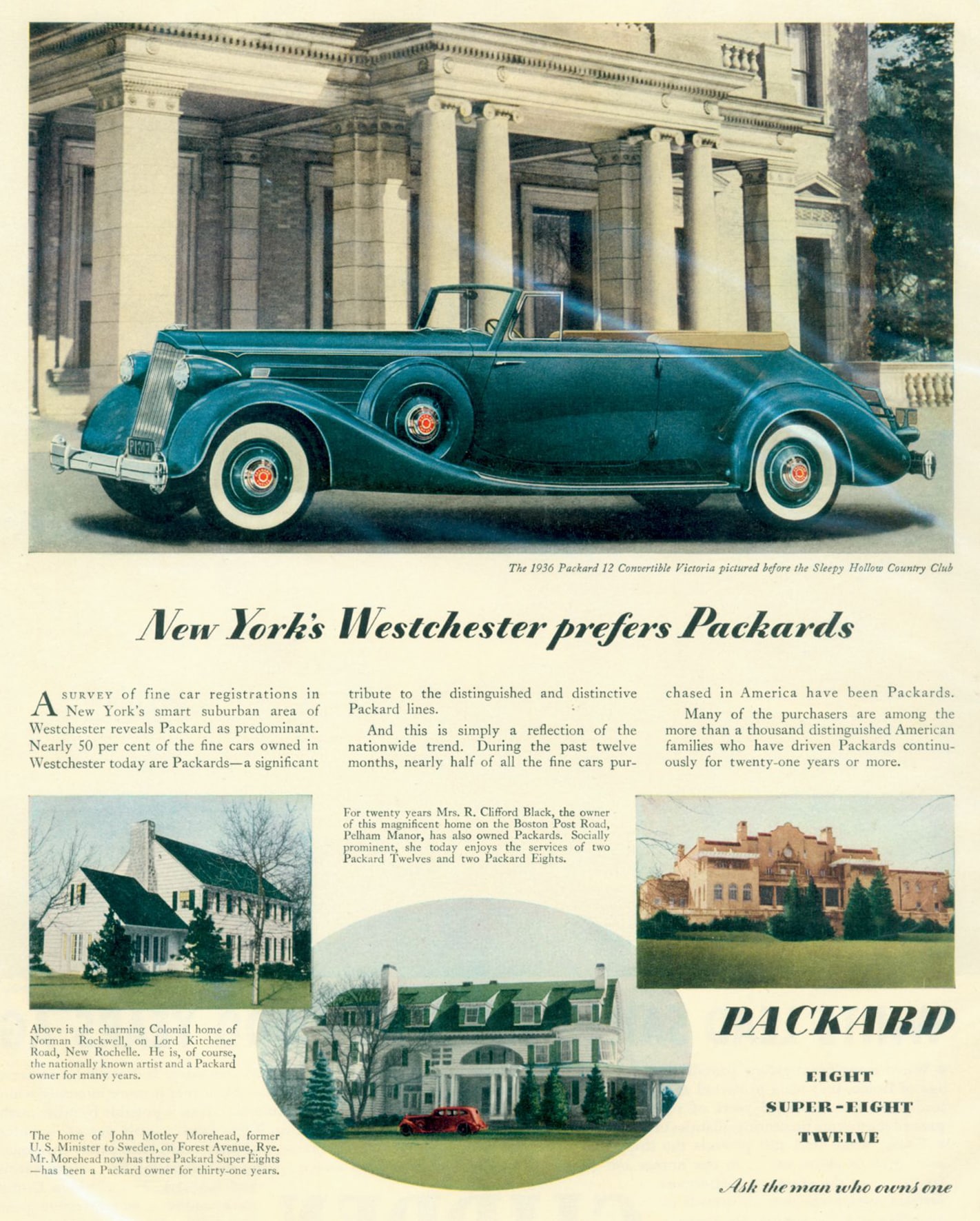HISTORICAL PROFILE
- Toward the end of the 19th century, Colonel Elliott Fitch Shepard (a lawyer who founded the New York State Bar Association in 1876) purchased over 500 acres high above the Hudson north of Tarrytown. Shepard’s wife, Margaret, was the eldest daughter of William H. Vanderbilt, thus a granddaughter of Commodore Cornelius Vanderbilt.
The Shepard’s engaged the renowned architectural firm of McKim, Mead, & White to design their manor house. Stanford White responded with a 75-room Victorian structure typical of the Italian Villa architecture popular in the 18th century. It featured high patterned ceilings, elaborate cornice work, hand-carved mahogany paneling, a ballroom, and a graceful, winding stairway near the front entrance.
Outside, an elaborate terrace offered a panoramic view of the Hudson Valley, and overlooked sunken, formal gardens. The gatehouses at the Club’s entrance and exit were built of massive pillars of carved stone, and the gates themselves of ironwork, both imported from France.
The building was completed in 1893, at a cost of $2,500,000. Unfortunately, Shepard did not live to see it completed. His widow eventually (in 1910) sold it to William Rockefeller and Frank Vanderlip.
In 1911, a group of men of legendary wealth and stature formed the Sleepy Hollow Country Club. Among them were William Rockefeller and his son Percy, Cornelius Vanderbilt, John Jacob Astor (who died on the Titanic in 1912), Franklin Vanderlip, Oliver Harriman, V. Everit Macy, A.O. Choate, and James Colgate.
Golf course architect, Charles Blair Macdonald and his engineer, Seth Raynor, designed and oversaw the construction of the initial 9 holes of golf in 1911. In the late 1920’s A.W. Tillinghast expanded the course to 27 holes. The club received Golf Digest’sTM “America’s Best New Course 2008” award in the “Best New Remodel” category. In 2011 the club achieved recognition in GOLFWEEKTM magazine as one of “America’s Top 100 Classic Courses”.
For eight years, between 1986 and 1993, the Senior PGA Tour staged its Commemorative Tournament at Sleepy Hollow. In year 2002 the club hosted the 102nd U.S. Women’s Amateur Championship.
Current Club Amenities Include:
Clubhouse
|
|
|
|
|
|
|
|
|
27 Holes of Golf – Two courses designed by Charles Blair Macdonald and A. W. Tillinghast
-
Golf Shop
-
Golf Learning Center and Practice Areas
Racquet Sports
- 10 Har-Tru Tennis Courts
-
3 Singles and 1 Doubles Squash Courts
-
4 Platform Tennis Courts
- 2 Pickle Ball Courts
Pool House
-
Adult and Children’s Pools
- Casual Dining Area
- Outdoor Pizza Grill
Riding Facility – Two Story Stable Building
-
45 Horse Boarding Facility
-
20 Paddocks and Tack Room
-
Champion Size Indoor and 2 Outdoor Riding Arenas
Fitness Center
-
Skeet and Trap Shooting Lodge
-
Gym Facility
The Club employs approximately 180 seasonal employees, 60 of which are year-round.
In the year 2006, Sleepy Hollow Country Club was rated 57th of the 100 most prestigious private clubs in America by Golf Connoisseur Magazine and has consistently been awarded the distinction of being named a Platinum Club of America (Top 100 Country Clubs) by the Club Leaders Forum Magazine.
Sleepy Hollow History
The Woodlea Clubhouse began development in 1892 as a Vanderbilt Mansion owned by Colonel Elliot Fitch Shephard, the owner of the Mail and Express newspaper and founder of the New York Bar Association. The mansion was purchased in 1910 by Frank Vanderlip and William Rockefeller, and in 1911, Sleepy Hollow Country Club was founded by a board of directors, which included John Jacob Astor IV, Cornelius Vanderbilt III, Edward Julius Berwind, and others. Throughout the years, Sleepy Hollow Country Club has gone through a number of renovations and changes to being one of the top-rated golf courses and country clubs both in New York and the United States.
Articles on Sleepy Hollow
